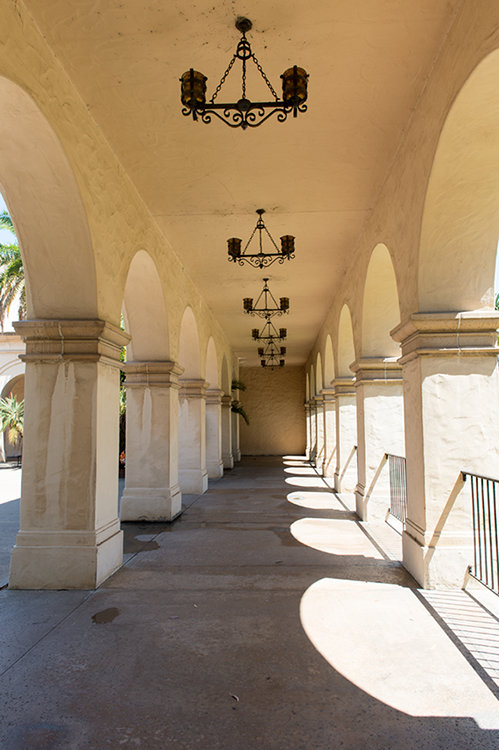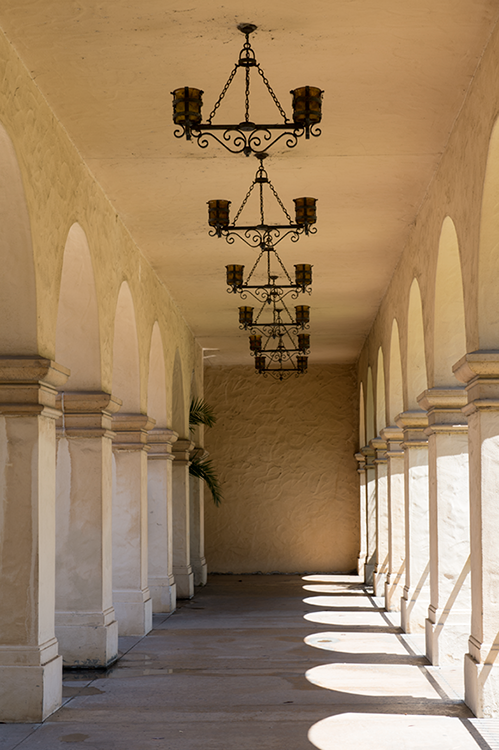4.14 A hallway photographed at 24mm. Exposure: ISO 200, f/8.0, 1/125 second.
Picking the Right Lens
Many times, the difference between a good photo and great one is the choice of lens and the focal length used. This has to do with the different perspectives that can be created by different focal lengths. The perspective is only changed when your position relative to the subject changes, so when you try to fill the frame so that your subject is the same size in the frame when using different focal lengths, you have to change your position. For example, the same hallway was photographed at 24mm in Figure 4.14 and at 70mm in Figure 4.15. The images were rendered very differently even though I moved further back to make sure the same six lanterns were in the frame.


4.15 The same hallway photographed at 70mm. I also moved backward so that the elements in the frame were the same. There are still only six lamps visible. Exposure: ISO 200, f/8.0, 1/125 second.
A wide-angle lens makes an object in the front look disproportionately larger than an object in the background. A longer lens compresses the elements in the frame, making objects in the background seem larger and closer to the front.
The following is a rough set of guidelines as to which focal length ranges work best for certain ...
Get Nikon D3200 Digital Field Guide now with the O’Reilly learning platform.
O’Reilly members experience books, live events, courses curated by job role, and more from O’Reilly and nearly 200 top publishers.

